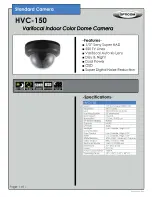
3.9.1 Safety Zone Area - Length and Width
The horizontal Safety Zone will prevent a collision only if the edge of the field in the direction of movement is sufficiently
distant from the vehicle and its load. This dimension (length) of the Safety Zone is described as the Minimum Distance D.
The Side Distance Z (or the width of the Safety Zone) is used to ensure that the sides of the vehicle or a protruding load do
not create a hazard.
It is highly recommended that an oversized Warning Zone (in comparison to the Safety Zone) be used. The Warning Zone
and its associated output signal the approach of the mobile vehicle (e.g., by sounding a horn or illuminating lights/beacons),
and reduce the speed of the mobile vehicle. This can reduce the need or the amount of braking and wear on the drive
mechanisms.
The Safety Zone configuration must take into account trapping/crushing hazards that could be created by physical objects
near the path of the mobile vehicle. An example would be an elevated conveyor that the sensing field of the Side Distance Z
passes under, but does not provide enough clearance. This situation can occur if the distance between the end of the
conveyor and the side of the mobile vehicle is less than 500 mm (20 in) per ISO 13854 (EN349) Minimum Gaps to Avoid
Crushing.
The following items apply to the calculation for determining the Minimum Distance D (Safety Zone length):
• Maximum speed of the AGV (Do not rely on the speed reduction initiated by the Warning Zone!)
• The SX5 response time
• The response time of the mobile vehicle drive logic, including the response time of any interfacing devices, such as
UM-FA-..A safety module (25 ms)
• The braking distance of the AGV (including environmental conditions, such as wet or slippery flooring)
• Absence or lack of clearance in front or to the sides of the AGV
• The speed of movement of an individual
• The reduced efficiency of the braking system, due to wear
WARNING:
• Calculate the correct stop time
• Failure to follow these instructions could result in serious injury or death.
• The Stop Time (TS) must include the response time of all relevant devices or controls that react to
stop the mobile vehicle. If all devices are not included, the calculated Minimum Distance (D) will
be too short.
WARNING:
• Maintain the proper separation distance
• Failure to establish and maintain the Minimum Distance D could result in serious bodily injury or
death.
• Locate the Safety Zone far enough from the nearest hazard such that an individual cannot reach
the hazard before cessation of hazardous motion or situation.
3.9.2 Minimum Distance D (Safety Zone Length) for Mobile
Applications
The following calculations do not specifically take into account the speed of an individual since it can be assumed that an
individual will recognize and will avoid the hazard or at a minimum stop their movement. If this cannot be reasonably
expected, such as if the Warning Zone is not used to signal the approach of the vehicle, the factor ZA should incorporate
the expected speed of an individual.
When all factors that influence a mobile vehicle stopping performance are considered, the formula is: D = D
SD
+ Z
SM
+ Z
amb
+ Z
F
+ Z
A
where:
D = Minimum distance from the vehicle surface to the edge of the Safety Zone in mm
D
SD
= Stopping distance in mm
Z
SM
= the additional distance needed to account for distance measurement error.
Z
amb
= the additional distance needed to account for error due to reflections from retro reflective surfaces.
Z
F
= the additional distance needed to account for AGV ground clearance
Z
A
= application specific additions
Note: In the following figure, Z
LEAD
= Z
SM
+ Z
amb
+ Z
F
+ Z
A
SX5 Safety Laser Scanner
34
www.bannerengineering.com - Tel: +1.763.544.3164
















































